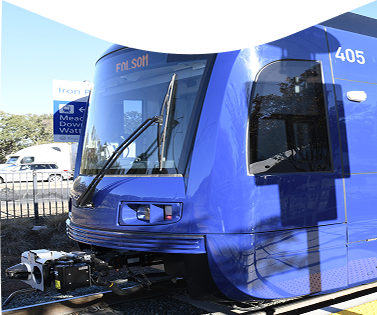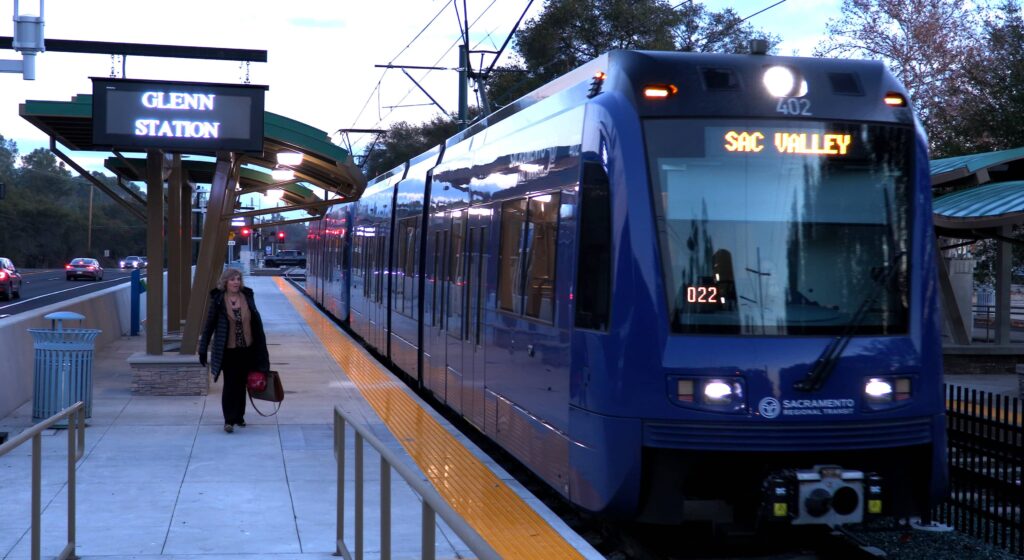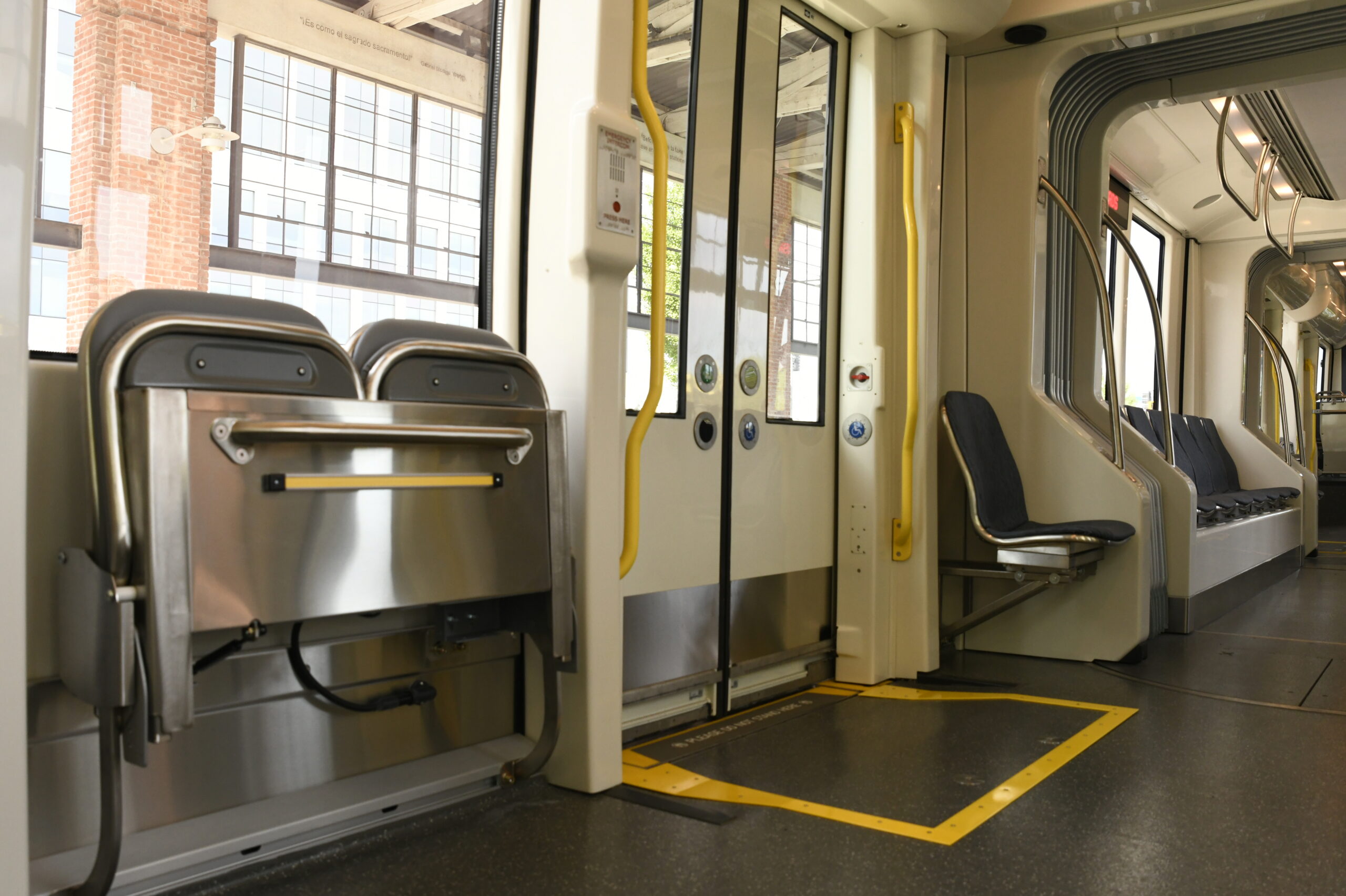SacRT introduced into service the new low-floor light rail vehicles on the Gold Line on Sunday, September 1, 2024.

SacRT is operating a mixed fleet of both low-floor and high-floor light rail trains on the Gold line as we complete final testing and make necessary adjustments to onboard the remaining new low-floor trains. This means you might encounter both types of trains on your commute.
The Blue and Green Lines continue to operate with our current high-floor light rail trains. Passengers in mobility devices or those who cannot navigate stairs will need to use the mini-high ramps at the end of station platforms for boarding and deboarding. We appreciate your patience as we work through this transition.

The Gold Line is operating between Sacramento Valley Station and Historic Folsom. Learn more about the Folsom 15-minute service frequency project at sacrt.com/Folsom15.
*At Glenn/Robert G. Holderness Station, riders will notice a new station design and two separate boarding platforms and tracks: board one side for travel toward Historic Folsom and the other for travel toward Sacramento. Please remember to look both ways before crossing the tracks.
For riders using mobility devices or needing to use the deployable ramp on the new S700 low-floor light rail vehicle son, please follow these steps:

For riders using mobility devices or needing to use the deployable ramp on the new S700 low-floor light rail vehicles on, please follow these steps:



When using the new low-floor light rail vehicles, all riders must board from the level platform instead of the mini-high ramps. Riders in mobility devices, walkers or visually impaired can board and exit the train using either one of the two middle doorways by accessing a deployable ramp. Riders press the “wheelchair accessible” button to deploy the ramp. Once the ramp has stopped moving, the doors will open. For visually impaired riders, tactile door indicator tiles will be available closest to the lead car on the station platform.
Riders not needing to use the deployable ramp, press the “door open” button at any of the active doorways either at the ends of the train or at the middle doors if the ramp is not being used.
Inside the train, there are designated seating areas for seniors and persons with disabilities.
When exiting the train, riders must press the “door open” button located on the door to open them. Riders needing to access the ramp would use the “wheelchair accessible” button to deploy the ramp to exit the train.
Note: Customers boarding at Blue and Green line light rail stations using mobility devices or are unable to climb stairs, will continue to use the mini-high ramp leading to the front train car. Riders will wait at the top of the ramp until the train arrives and the operator deploys the boarding ramp.
The new low-floor vehicles provide easier access at every doorway, a spacious seating design, and large windows for better light and views. They feature improved accessibility with wider aisles and areas for bicycles. The new low-floor vehicles increase overall operational flexibility by providing more access to passengers with disabilities.
The new low-floor light rail trains will only use a maximum of three new Siemens (S700) light rail vehicles, since there are several city blocks in downtown Sacramento that are not long enough to accommodate four of the S700 vehicles while meeting ADA requirements for the bridge plate to land 8” above the top of the street.
Siemens Mobility will begin production on an additional eight trains later this year. Those trains are expected to be delivered to SacRT in late 2025. SacRT has also ordered an additional 17 vehicles from Siemens Mobility, which are expected to begin production in 2025. To date, SacRT has received funding for a total of 45 new low-floor light rail trains. SacRT is contracted with Siemens Mobility to order possibly up to 76 new vehicles.
SacRT has begun construction on Blue Line station platforms to meet the height requirements of the new low-floor trains as of late 2024 – construction is expected to be completed by 2027. Learn more at sacrt.com/modernization.
